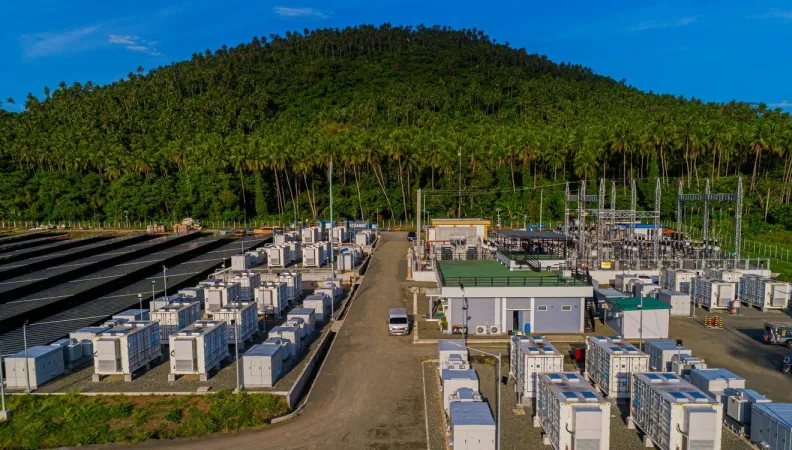Share the page
Powering Batteries with Sun, Wind and Water
Published on

Where energy continues to be produced by fossil fuels, African countries are seeking sustainable alternatives. Africa Renewable Energy Scale-up (ARE Scale-up) funds the storage of sustainable sources of electricity for the green transition up and down the continent.
The Africa Renewable Energy Scale-up (ARE Scale-up) program funds feasibility studies to incorporate renewable energy sources in projects generating electricity. Electricity storage contributes to greening energy production and this technology's leverage effect on the energy mix makes it a key issue in the energy transition.
"Because storage is a recent, evolving innovation, incorporating this component into a project often requires prior analysis. This can be funded by the Africa Renewable Energy Scale-up Facility as part of a European Union grant," explained Silvia Puddu, who is in charge of this program at AFD.
Launched by the European Union and AFD in 2017, the ARE Scale-up program has a €16 million budget. It aims to support African countries in their energy transition and mobilize funding to develop renewable energy on a continent where electricity is still largely produced from fossil fuels.
Using surpluses when demand is high
Renewable energy like wind and solar power on the other hand, can be intermittent and insufficient for electricity demands. Reliable storage is therefore crucial. The goal is to produce electricity when wind, solar and water power sources are available – and demand is low – to store surpluses which will then be used when demand is high.
See also: Technical assistance, another cornerstone of the energy transition
At the center of the hunt for reliable energy, are Pumped Storage Stations and battery storage. In the former, "energy is stored by pumping," said Florent Germain, project team manager at AFD's Energy Division. "When electricity production exceeds demand, the surplus is used to pump water from a river or downstream source to an upstream storage basin. Here, energy is stored in the form of water that will be released through the turbines when demand is high.”
Feasibility studies in Kenya and Tunisia
This type of facility, which contributes to the balance between energy production and consumption and limits costs during peak demand, is being evaluated in Kenya. "The role of renewable energies is poised to grow in this country,” said Adam Ayache, Project Team Manager at AFD’s Energy division. “Preliminary studies supported by ARE Scale-up help us identify sites where steps can be taken to ensure their installation cost is financially justified."
See also: 5 projects that are driving renewables around the world
The installation of storage facilities is essential in Tunisia, where the share of renewable energy is expected to rise from 3% today to 30% in 2030. "At the Tabarka site, preliminary studies confirmed that the site's natural topology was ideal for installing a pumped storage station, and they enabled us to determine the development characteristics that corresponded to the technical-economic optimum," noted Julia de Pierrepont, Head of AFD’s energy projects in Tunisia. In addition to validating this option, the ARE Scale-up funding also helped determine the project's environmental impacts and minimize its construction costs.
Intermittent energy sources
Battery storage is also being developed, mainly in energy projects involving wind and solar power. "In Senegal, in the town of Diass, not far from Dakar, a 56 MW/56 MWh battery will be installed. It will absorb the intermittency of the nearby solar power plant and improve the grid's stability," said Florent Germain. This first project will be followed by others in a country whose energy transition relies heavily on storage.
On a broader scale across Africa, the Continental Master Plan (CMP), a program for electricity development in Africa, also includes a section on storage. Since 2021, ARE Scale-up has been funding a study to identify and prioritize storage needs in Africa.
